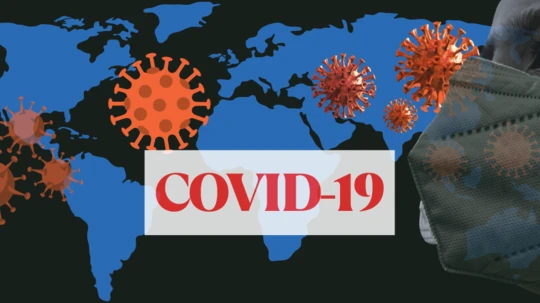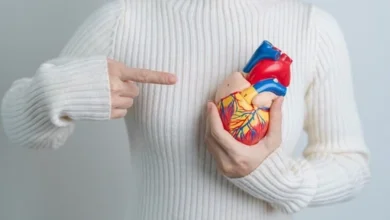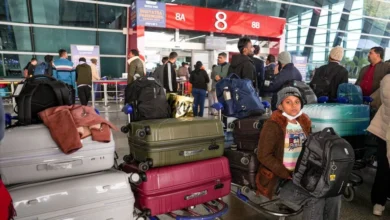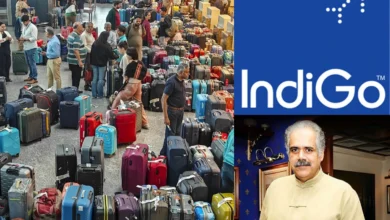COVID-19 Returns? Is The New Variant Worse And How Long Will You Be Sick With It?

With the world continuing to inch away from the height of the COVID-19 pandemic, a fresh wave of infections is again causing concern-this time fueled by new subvariants of the Omicron variant.
Southeast Asia, more so urban areas in Singapore, Hong Kong, and sections of India, is experiencing a rise in COVID-19 infections propelled by the JN.1 variant and its sub-lineages LF.7 and NB.1.8 but is it a new pandemic in the making?
How severe is the new variant? And what should you do if you become infected? All three of these countries have officially reported an increased surge in infections. In India, while numbers are still low by comparison, Kerala is the leader in new cases (69 as of mid-May), followed by Maharashtra, Tamil Nadu, Karnataka, and Delhi. Experts explain the acceleration of cases not due to increased virulence but due to behaviors such as erosion of immunity and fatigue around prevention strategies.
Most recent data from Southeast Asian health ministries reveal a sudden surge in cases of Covid-19 in Hong Kong, Singapore, China, and Thailand. In Singapore, the Ministry of Health’s rare update-its first since nearly a year ago-recorded a 28% jump in weekly cases to 14,200 for the week to May 3. The daily hospital admissions have also increased about 30%.
Meanwhile, Hong Kong is also experiencing a sharp peak. The Centre for Health Protection indicated the positivity rate of respiratory samples rose from 1.7% mid-March to 11.4%, greater than the August 2024 peak. There have been 30 fatalities in 81 severe adult cases in the past month, the majority involving individuals over 65 and with existing medical conditions.
The trend is concerning and part of a wider pattern sweeping across the region. Thailand experienced fresh clusters of infections following its heavily publicized Songkran holiday in April, and mainland China’s test positivity rates have risen by over double since late March, approaching that of its summer 2024 wave.
The new wave of COVID has brought the JN.1 variant of Omicron into the spotlight, which is responsible for the latest surge in numbers. In India alone, there are 257 active cases, and the discussion about safety, new policies and health issues has started.
The present surge in COVID-19 cases is being majorly spurred by new Omicron subvariants, most notably JN.1. That variant and its offspring LF.7 and NB.1.8, are being found highly contagious. “These variants are too easy to spread and disrupt the body’s immunity and cause another infection,” says Dr. Harish Bhatia, Senior Chest Specialist & Director & Head Dept. Of Respiratory Medicine
The World Health Organization (WHO) has classified JN.1 as a “variant of interest,” subsequently promoting it to a “variant of concern.” Nevertheless, world health authorities continue to assert that the public health risk is low at this point.
Is JN.1 More Dangerous Than Previous Variants?
The JN.1 strain, though better at spreading, has not indicated signs of making healthy people sicker. “The good part,” Dr. Bhatia explains, “is that this variant seems to produce milder disease in healthy individuals.”
But there is an exception. The old, the immunocompromised, or those with pre-existing conditions such as diabetes or heart disease are still at increased risk of developing complications. For them, even a “mild” strain could be a potentially deadly affair. It’s a warning that COVID-19 is not yet “just another cold.”Symptoms Of Covid-19 JN.1 Variant To Watch For
The symptoms of JN.1 and its sub-lineages are very similar to those of previous Omicron variants, affecting the upper respiratory system. Typical symptoms are:
- High temperature
- Runny nose
- Sore throat
- Headaches
- Body aches
- Exhaustion or tiredness
- Mild gastrointestinal distress (in some individuals)
The majority of individuals recover with rest at home, but the duration and intensity depend on one’s immune response and health condition.Covid-19 JN.1: How Long Will You Be Sick?
Experts say that the average recovery period for a light COVID-19 disease caused by the JN.1 variant is 5 to 7 days. Yet, some of the symptoms-especially fatigue and cough-can persist for 2 to 3 weeks.
Dr. Bhatia suggests that in case of persistence of the symptoms beyond 10 days or deterioration-particularly high-grade fever or respiratory difficulty-medical help must not be delayed. “It is important to listen to your body and not overlook warning signs,” he adds.Covid-19 JN.1: What to Do If You Get Infected?
In case you test positive for COVID-19, here is what public health officials suggest:
Isolate for a minimum of 5 days, or until your symptoms resolve. For extra caution, isolate up to 10 days.
- Drink plenty of fluids and get plenty of rest. Symptomatic treatment with paracetamol for fever and muscle pain is often adequate.
- Keep track of your symptoms, particularly if you fall into a high-risk group.
- Get professional assistance if you have difficulty breathing, chest discomfort, or unrelenting high fever.
- Notify close contacts to watch for symptoms and test as necessary.
- Prevent contact with high-risk individuals for a minimum of 10 days.
Although hospitalization is not necessary for healthy persons in most cases, early diagnosis and treatment are important to avoid complications.Covid-19 JN.1: How to Stay Safe?
Though the world has transitioned away from the period of global emergency of the pandemic, the virus keeps mutating. Remaining guarded is still important-particularly during surges such as this one.
Dr. Bhatia points out, “Wearing a mask in public places, regularly washing your hands, keeping your vaccinations current-including booster shots-and keeping your distance from someone who is infected are still effective measures.”
Besides, the immunocompromised individuals or those with vulnerable family members should take extra precautions and advise their healthcare professionals about preventive drugs or vaccines beyond the primary doses.
COVID-19 is frequently no longer making headlines as it did in 2020, but its presence is certainly not done yet. The advent of JN.1 and other subvariants is a grim reminder that the virus continues to mutate-and so must our strategy against it.









